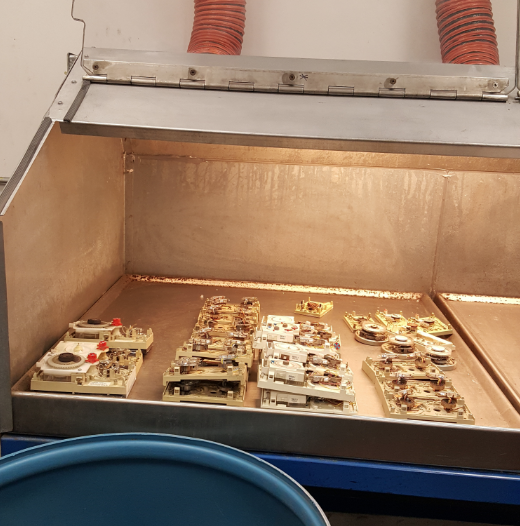Uncovering the “Mystery” Behind Our Recycling Center

Throughout all our communications, regardless of the platform, we almost always refer to our recycling center in Port Washington, Wisconsin. Over the years, it also has had a dash of the mysterious because people seldom ask, “what happens there?” and most are unaware of the nuts and bolts that take place.
It reminds us of the legendary elephant graveyard, which was the mythical place where aging elephants went to die (and kept ivory hunters searching for all that treasure).
Our Port Washington recycling center certainly isn’t mythical in the literal sense, but it is the very real place where trained technicians take thermostats and extract mercury as it awaits final burial.
Throughout our 21 years of existence, we have not only tried to collect mercury thermostats but also to recycle and safely store this well-documented health hazard.
We chose to turn over this serious responsibility to Veolia Environmental Services in 2017. Its recycling center is in quaint Port Washington, Wisconsin, population about 11,000. The town boasts a shoreline with Lake Michigan (hence the Port) and is named after President George Washington.
I had the opportunity to visit our site for an audit in 2017 and was fortunate to have Sara Crom, our program contact, provide me with an up-close look at how the process works. I came away confident and reassured by the careful and consistent handling of the mercury that I saw throughout the operation. To simplify the process, a special loading dock receives our bins and pails. Veolia carefully opens, tallies, sorts and cleans each container. It then returns all bins and pails to the sender (usually our HVACR wholesale and contractor partners) within an appropriate amount of time.
They store thermostats and loose parts in 55-gallon drums following well-established guidelines. Then they affix an appropriate label and seal the drum with a band that they only open when adding a new product. When that becomes necessary, Veolia uses a special negative pressure venting process to capture and vent any fumes.
Throughout my tour, one of the most important aspects was that the Veolia facility meets or exceeds all local, state, federal and EPA regulations for the management of mercury. The facility is also implementing a management system that meets ISO and Responsible Recycling practices, and all personnel have received training in Hazardous Waste and Universal Waste.
During my visit, I conducted an inspection and was impressed with the safety precautions and the attention to detail. Because of the firsthand review, I was able to suggest a new design flow for processing and returning bins. As part of this refinement, we updated packing instructions and related marketing collateral material.
Invariably, people ask me whether they handle any other recycling material — they do — including plastics, electronics and other parts of our thermostats.
The visit also exposed me to a sense of the culture at Veolia. While the process and attention to detail impressed me, I also had a chance to chat with people who worked there as they handled other recycling products, such as fluorescent tubes. I had the distinct impression the employees understood they had an important, if often unrecognized, role in the environmental cycle and what they did was significant, if not glamorous. I believe they are proud of that contribution.
That leads us to the epitaph for the mercury’s final resting place. Will it be in a vault, buried somewhere underground or stored in a mountain? We don’t know. We are still waiting for the EPA to tell us where the “final” resting place will be. And because mercury is an element that you can’t destroy, it stays tucked away in a safe slumber, in Port Washington, Wisconsin.
And that should give all of us a sense of reassurance.

